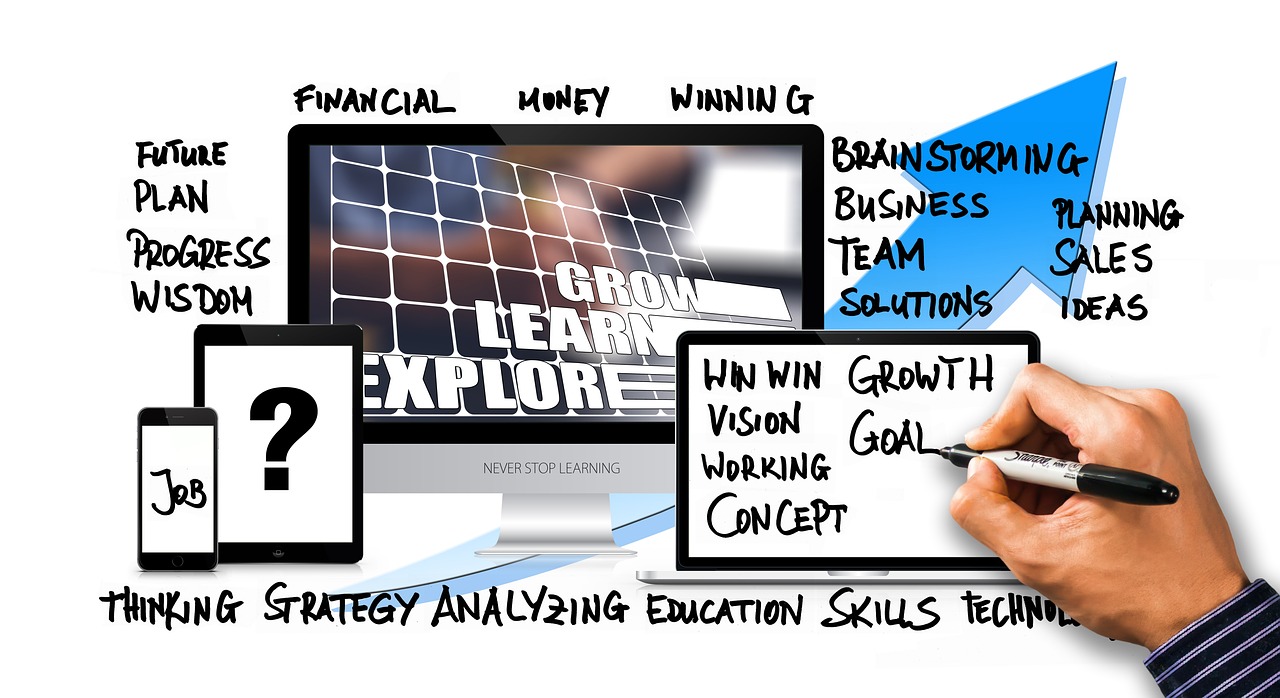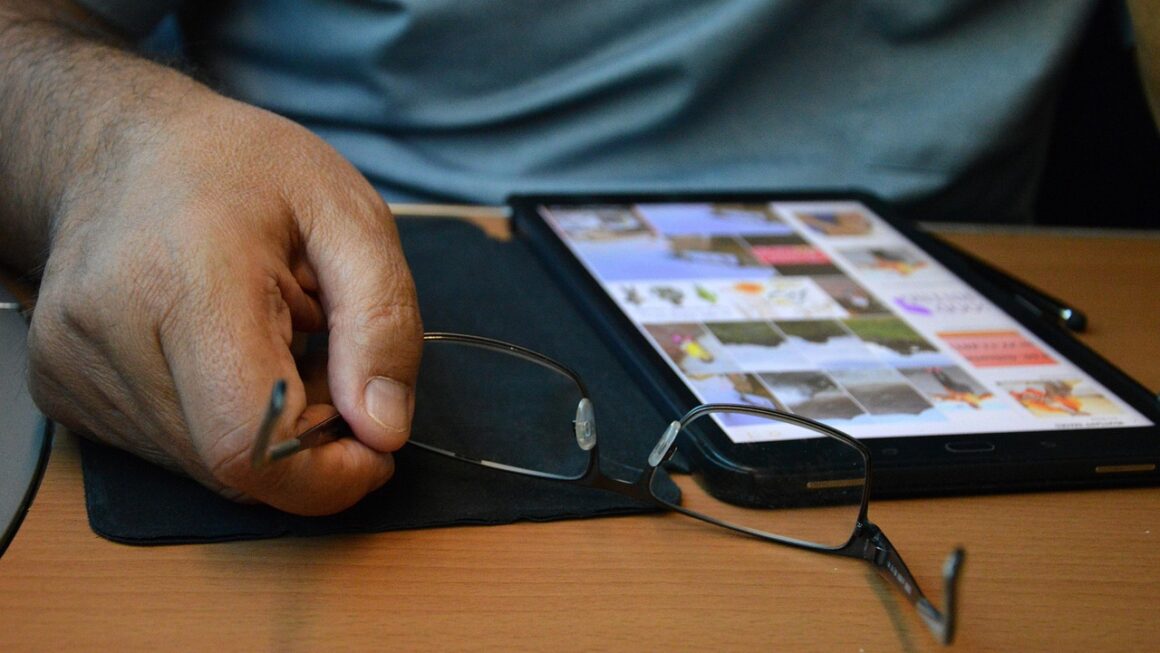Augmented Reality (AR) glasses are rapidly evolving from science fiction fantasy to a tangible, consumer-ready technology. These smart glasses overlay digital information onto the real world, offering a seamless blend of the physical and virtual realms. From enhancing productivity to revolutionizing entertainment, AR glasses promise to change how we interact with our environment and the digital world, and this post dives into everything you need to know about them.
What are AR Glasses?
Defining Augmented Reality Glasses
Augmented Reality (AR) glasses are wearable devices that project computer-generated images, text, and data onto the user’s field of view. Unlike Virtual Reality (VR) headsets which immerse users in a completely digital environment, AR glasses augment the real world by overlaying digital information onto it. Think of it as having a computer screen hovering right in front of your eyes, capable of displaying anything from notifications and maps to interactive 3D models.
Key Components and Functionality
AR glasses typically comprise several key components working in concert:
- Display: Projects digital information onto the lenses. Several display technologies are used, including waveguide displays, micro-OLED, and holographic projections.
- Sensors: These sensors capture information about the user’s surroundings and movements. Common sensors include cameras, depth sensors, accelerometers, gyroscopes, and magnetometers.
- Processing Unit: This is the “brain” of the glasses, responsible for processing sensor data, rendering graphics, and running applications.
- Connectivity: Allows the glasses to connect to other devices and networks, typically via Wi-Fi and Bluetooth.
- Power Source: Typically a battery, which determines the glasses’ operating time.
Examples of Current AR Glasses
Several AR glasses are available or in development, each targeting different use cases:
- Microsoft HoloLens 2: A high-end AR headset designed for enterprise use, focusing on industrial applications like remote assistance and training.
- Magic Leap 2: Another enterprise-focused AR headset, emphasizing advanced features like dynamic dimming and improved color accuracy.
- Google Glass Enterprise Edition 2: Designed for specific professional environments, like manufacturing, logistics, and field service.
- Vuzix Blade Upgraded: A more consumer-oriented option, offering features like notifications, navigation, and voice control.
- Ray-Ban Meta Smart Glasses: A collaboration between Ray-Ban and Meta, combining stylish eyewear with integrated cameras, speakers, and microphones for capturing and sharing moments.
Applications of AR Glasses Across Industries
Enterprise and Industrial Uses
AR glasses are rapidly transforming various industries by improving efficiency, safety, and training.
- Remote Assistance: Experts can guide technicians in the field through complex repairs, reducing downtime and travel costs. Example: A mechanic wearing AR glasses can receive real-time instructions and schematics overlaid onto the equipment they’re working on.
- Training and Simulation: AR glasses can create immersive training scenarios, allowing employees to practice critical skills in a safe and controlled environment. Example: A surgeon can practice a new surgical procedure on a virtual patient before performing it on a real person.
- Logistics and Warehousing: Streamline operations by providing workers with hands-free access to information about inventory, order picking, and shipping routes. Example: A warehouse worker wearing AR glasses can see the optimal route to pick items, reducing errors and increasing productivity.
- Manufacturing: AR glasses can display real-time data about production processes, enabling workers to identify and resolve issues quickly. Example: An engineer can view the status of a machine and receive alerts if any problems are detected.
- Field Service: Technicians can access equipment manuals, diagnostics, and repair procedures without having to carry physical documentation. Example: An electrician repairing a power line can view wiring diagrams and safety procedures overlaid on their view of the equipment.
Healthcare Applications
The medical field is embracing AR glasses for a wide range of applications:
- Surgical Assistance: Providing surgeons with real-time data during operations, improving precision and reducing errors. Example: Surgeons can view 3D models of organs and blood vessels overlaid onto the patient’s body, guiding them during complex procedures.
- Medical Training: Allowing medical students to practice procedures and anatomy in a realistic and interactive environment. Example: Medical students can dissect a virtual human body and explore different organs and systems in detail.
- Patient Care: Assisting patients with visual impairments, providing real-time information about their surroundings, and helping them navigate unfamiliar environments. Example: Patients with low vision can use AR glasses to magnify text and objects, and to receive audio cues about potential hazards.
Consumer and Entertainment
AR glasses are starting to make their way into the consumer market, offering new ways to experience entertainment, gaming, and social interaction.
- Gaming: AR games can overlay digital characters and environments onto the real world, creating immersive and engaging gameplay experiences. Example: Players can battle virtual monsters in their living rooms, or explore hidden worlds in their neighborhood.
- Navigation and Information: Providing real-time directions, points of interest, and contextual information about the user’s surroundings. Example: Tourists can use AR glasses to view historical information about landmarks, or to find nearby restaurants and shops.
- Entertainment: Streaming movies, TV shows, and other video content onto a virtual screen in front of the user’s eyes. Example: Travelers can watch a movie on a large virtual screen during a flight, without having to carry a physical screen.
- Social Interaction: Connecting users with friends and family in new and innovative ways, such as through shared AR experiences. Example: Users can play virtual board games together, or collaborate on creative projects in a shared virtual space.
The Benefits of Using AR Glasses
Enhanced Productivity and Efficiency
- Hands-free operation: Allows workers to focus on the task at hand without needing to hold a device.
- Real-time information access: Provides instant access to data and instructions, reducing errors and improving decision-making.
- Improved communication and collaboration: Enables remote experts to provide guidance and support, reducing downtime and travel costs.
- Streamlined workflows: Automates tasks and simplifies processes, increasing productivity and efficiency.
Improved Safety and Training
- Safer work environments: Provides workers with real-time safety alerts and hazard warnings.
- More effective training: Creates immersive and engaging training scenarios, improving knowledge retention and skill development.
- Reduced risk of accidents: Allows workers to practice critical skills in a safe and controlled environment.
Enhanced User Experiences
- Immersive and engaging content: Overlays digital information onto the real world, creating unique and compelling experiences.
- Personalized information and recommendations: Delivers information tailored to the user’s specific needs and preferences.
- New ways to connect and interact: Enables users to share experiences and collaborate with others in new and innovative ways.
- Increased convenience and accessibility: Provides hands-free access to information and services, making them more convenient and accessible.
Cost Savings
- Reduced travel costs: Enables remote assistance and collaboration, reducing the need for on-site visits.
- Improved efficiency and productivity: Streamlines workflows and automates tasks, increasing output and reducing labor costs.
- Reduced errors and downtime: Provides workers with real-time information and guidance, minimizing mistakes and improving uptime.
- Lower training costs: Creates immersive training scenarios, reducing the need for traditional classroom training.
Challenges and Future of AR Glasses
Technical Limitations
- Battery Life: A significant challenge is extending the battery life of AR glasses to allow for all-day use.
- Processing Power: Handling complex AR applications requires powerful processors, which can lead to overheating and bulky designs.
- Display Technology: Improving display resolution, brightness, and field of view is crucial for creating a seamless and immersive AR experience.
- Weight and Comfort: AR glasses need to be lightweight and comfortable to wear for extended periods.
Privacy Concerns
- Data Collection: AR glasses collect a vast amount of data about the user’s surroundings and behavior, raising concerns about privacy and security.
- Facial Recognition: The ability to identify people in real-time raises ethical questions about surveillance and consent.
- Data Security: Protecting sensitive data from unauthorized access and misuse is essential.
Future Trends
- Miniaturization: Expect to see AR glasses become smaller, lighter, and more stylish, resembling traditional eyeglasses.
- Improved Displays: Advancements in display technology will lead to higher resolution, brighter, and wider field of view displays.
- Enhanced AI Integration: AI will play a key role in understanding user intent, providing personalized recommendations, and creating more intelligent AR experiences.
- 5G Connectivity: Faster and more reliable 5G connectivity will enable seamless streaming of data and content to AR glasses.
- Increased Consumer Adoption: As the technology matures and prices come down, expect to see AR glasses become more mainstream and widely adopted by consumers.
Conclusion
AR glasses hold immense potential to transform various aspects of our lives, from how we work and learn to how we entertain ourselves and interact with the world around us. While challenges remain in terms of technical limitations and privacy concerns, the rapid pace of innovation suggests that these hurdles will be overcome in the coming years. As AR technology continues to evolve, we can expect to see more sophisticated and user-friendly AR glasses emerge, unlocking new possibilities and shaping the future of how we experience reality. Investing in understanding this technology now is crucial for both businesses and individuals seeking to leverage its transformative power.




